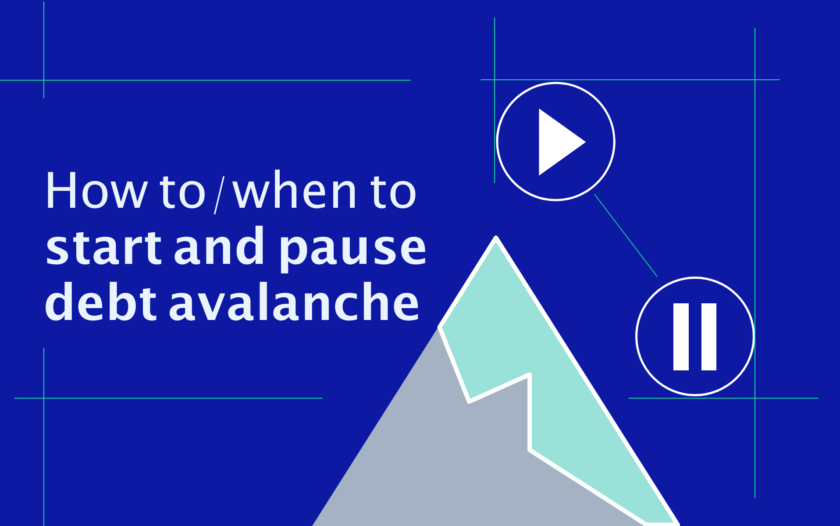How and When to Start and Pause Debt Avalanche
About Kevin
Kevin is a former fintech coach and financial services professional. When not on the golf course, he can be found traveling with his wife or spending time with their eight wonderful grandchildren and two cats.
Read full bio
At a Glance
According to some sources, 80% of Americans are in debt. Business Insider reports that the average debt for those individuals is $52,940. Recent studies have also revealed that 70% of millennials live paycheck to paycheck. These are staggering numbers. Fortunately, there are strategies for getting out of debt. One of these is known as the “debt avalanche method.”
With the debt avalanche method, the person in debt makes a list of all their outstanding debt, ranking each account by interest rate, from high to low. Once that list is complete, they commit to making minimum monthly payments on all accounts, but add an extra payment to the account at the top of the list, the one with the highest interest rate.
The idea behind debt avalanche is to pay off high-interest debt first. It’s a sound strategy, one that can save the debtor hundreds or even thousands of dollars over the course of the program. Of course, the key to success is not to accumulate new debt while making payments. That takes careful budgeting and disciplined spending habits.
Related: Best Debt Reduction Strategies
How and When to Get Started with Debt Avalanche
Many people already have their monthly debt payments being deducted automatically from their bank account. If you make the decision to use debt avalanche, check each of your accounts first to make sure those are “minimum” monthly payments. While you’re in your accounts, check the interest rates. They can be found under “terms and conditions.”
The next step is to create a budget. Making the commitment to a debt payoff plan is a big step. If you’re not careful, your dedication to it could cause you to neglect other bills. Make sure you list all expenses on your budget so you can see how much is left over for extra debt payments. List that amount as a separate line item on the budget.
Once your account lists and budget are done, change the payment on the account with the highest interest rate to a fixed-rate payment for the amount specified in your new budget. Set it on autopay and then leave it alone. When that first account is paid off, switch your fixed payment to the account with the next highest interest rate. Repeat the process.
Pausing Debt Avalanche When Finances Become Unmanageable
There may come a time when life throws you a curveball, and you find yourself strapped for cash. It’s okay to pause your debt avalanche when that happens. Log in to the account you’re currently targeting with extra payments and change the monthly payment to “minimum payment due.” Make sure you make that minimum payment every month, so you don’t fall further behind.
Careful consideration should go into the decision to pause the debt avalanche strategy. If there’s another way to make ends meet, or if you’ve saved up an emergency fund, go with that option first. Ultimately, getting entirely out of debt is one of the best things you can do to make your finances manageable. Make the debt avalanche method a top priority. You’ll be grateful when you get to the end and all that debt is gone.
Which is Better: Debt Snowball or Debt Avalanche?
There is another debt payoff strategy called “debt snowball.” It’s like the debt avalanche because you make a list of accounts and prioritize them in a certain order. The difference is that the debt snowball is ordered by the amount of the debt, from low to high. The idea is to pay off the small balances first, helping you build momentum in your payment plan.
The debt snowball vs avalanche debate usually ends in a draw. Based on purely mathematical factors, like total interest payments, using the avalanche method to pay off debt is the better strategy. However, the debt snowball strategy gives the participant more wins early, helping them to stay dedicated to the program. The common denominator in the two is that you’re debt-free at the end. That’s worth putting some effort into.









